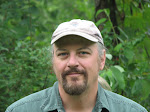Personally, I always thought “Yawkey Way” was
unintentionally appropriate, referring to the way of Tom Yawkey failed to lead
the Red Sox to a championship in his 44 seasons as owner. That way remained in
place for more than two championship-barren decades even after his death and “Yawkey
Way” was always a kind of grim reminder of that.
But that’s over now, so I’m fine with Jersey Street.
The most discussed address in recent memory pre-dates Fenway Park by some 25
years, to 1887, when the name was first proposed to the Laying Out Department
of the City of Boston. At the time, the Fenway neighborhood was little more
than mud and a few lines scratched out on paper by renowned landscape architect
Frederick Law Olmstead.
All this got me thinking. Why “Jersey Street” anyway? Or for that matter, why Lansdowne or Van Ness
or Ipswich (which was what that stretch of road that is now Van Ness was once
called)? Although I’ve been going to Fenway Park for almost forty years, I knew
almost nothing about how the surrounding streets got their names… or even much
about how the decision came about to rename a portion of Jersey Street after Yawkey.
Brookline Avenue is a gimme, as that was simply the
name of the road that connected Boston to Brookline. The rest is more
complicated.
The filling of the Fenway, which was completed by
about 1900, was an extension of the earlier filling of the Back Bay, which
turned tidal mud flats into developable land. The architect behind the Back
Bay, Arthur Gilman, was eager to give the former swamp an aura of class, so he named
each cross street after an English Lord. This explains the alphabetic pattern
which begins with Arlington and ends with Hereford.
Olmstead, the Fenway architect, took his cue from Gilman
and decided to continue the alphabetic pattern of the Back Bay cross streets
honoring English lords. Hence the naming of Ipswich, Jersey, Kilmarnock (originally
Kenyon) and Lansdowne Streets.
Specifically, Lansdowne was named after the Marquis
of Lansdowne, a peerage held by the held by the head of the Petty-FitzMaurice
family. Jersey Street memorialized the Earl of Jersey, a title held by the Child-Villiers
family.
Yet another powerful family, the Boston Globe Taylors, owners of the Red
Sox, bought the land for Fenway Park in 1911, and the parcel was originally
bounded by Brookline Ave., Lansdowne, Jersey and Ipswich Streets. Ballpark
construction necessitated an extension of Ipswich Street to border the park to
the south, but club president John I. Taylor balked at naming the extension Ipswich
Street. In 1906, during a trip to
Europe, he had met and later married Cornelia Van Ness of San Francisco, a high
society girl whose family had roots in Vermont. Ever the romantic, John I. named
the extension Van Ness Street after his bride, thus breaking the stranglehold
of British Lords. A year later, when Fenway Park opened in 1912, the official
address of the new ball club became 24 Jersey Street.
And so it stayed until Tom Yawkey, who bought the
team in 1933, died on July 9, 1976. A short time later a Boston City
Councilman, variously reported as either Christopher Ianella or Fred Langone,
proposed the name change. It was passed
by the nine-member council unanimously and was in effect by the time the Red
Sox opened the 1977 season. The clubs official address became 4 Yawkey Way, the
#4 numeral likely a subtle homage to Joe Cronin, a Yawkey favorite.
It was not controversial at the time, but it’s also
important to note that despite the fact that Boston was 25% black and Hispanic
in 1976/77, the city council was all-white.
Louise Day Hicks, the Southie attorney known for her staunch opposition
to desegregation, served as council president in 1976 and remained on the
council in 1977. In fact, she was at her political peak, having recently founded
an organization known as ROAR (Restore Our Alienated Rights), which advocated
organized resistance to busing. They not only held mass marches, but pelted school
buses from black neighborhoods arriving in white neighborhoods and burned a
wooden school bus in effigy.
Pretty subtle, huh?
This is not to suggest that Tom Yawkey was in any
way responsible for that, but it does indicate that the initial name change
took place with no input or consideration whatsoever from Boston’s minority
communities.
And isn’t that the lasting lesson of all this? Only
the rich and powerful, like John I. Taylor and Frederick Law Olmstead, the City
Council or John Henry get to name the streets. And only the rich and powerful, like
the Earl of Jersey, the Marquis of Lansdowne, Cornelia Van Ness or Tom Yawkey,
get to have streets named after them.
That’s the way of this world.
Glenn
Stout’s next book, with Richard Johnson, will appear in November. The
Pats: An Illustrated History of the Patriots
will be the first complete narrative history of the team. For more see
www.glennstout.net

